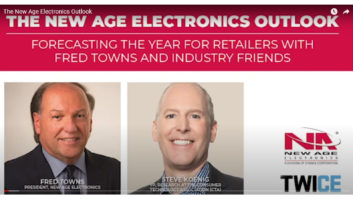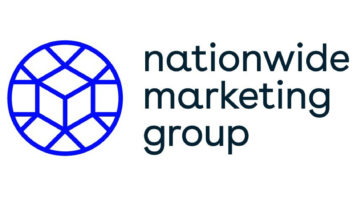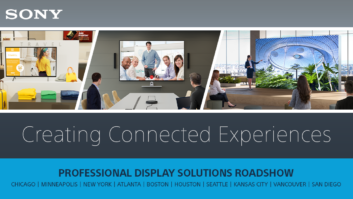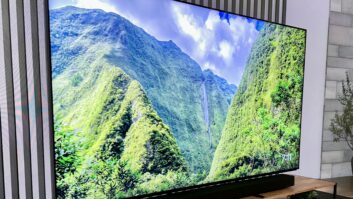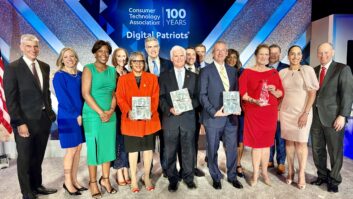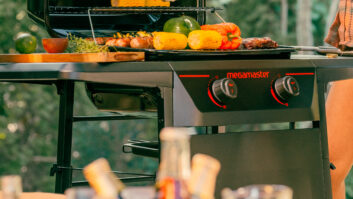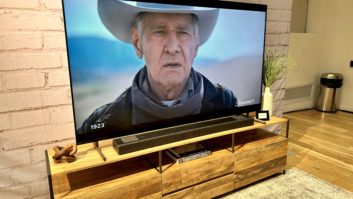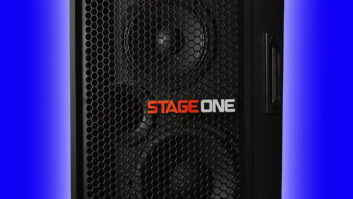Increased market share, the post-format-war era for Blu-ray and green recycling efforts were just some of the subjects on the mind of Sony Electronics’ president Stan Glasgow during his semiannual press roundtable, here, last Wednesday.
Glasgow, along with Stuart Redsun, corporate marketing senior VP, reviewed the current CE marketplace and how Sony is competing in it during the briefing at the Sony Building, a week after a dealer show where Sony previewed its 2008 lineup. (See pgs. 6, 36, 38, 44 and 54.) Among the key issues discussed were:
- The economy and Sony: Regardless of what Warren Buffett said earlier in the week about the economy being in a recession, there isn’t one in consumer electronics, according to Glasgow. “The bottom line is that consumers are buying CE products. The transition to HD is a major factor in that. We had one of our strongest holiday seasons across the board, and we gained share.” He added that in consumer electronics a premium brand like Sony “holds up in tough economic times” and that the top end of the market is still “doing well.” Glasgow mentioned market share gains in digital cameras. In November its sales in the category grew 115 percent “while the industry was up 20 percent. In December the industry was down 5 percent, but our sales were up 20 percent, due to our new feature sets.”
- Sony Style growth: Sony operates 40 Sony Style stores and plans to have 60 by 2010. “We had 34 percent growth in sales both online and in stores. We are working hard to improve the consumer experience,” Glasgow said. “We are also working with our retail partners,” and, he noted, Sony Style departments are now part of Nebraska Furniture Mart and Abt, among others.
- Format-war aftermath: While the Blu-ray format war may be over, “the battle really begins now to move people away from DVD to Blu-ray,” Glasgow said. “We have a lot of work to do now, so we are not gloating. Upscale DVD players have gotten better and better. We need to explain the additional feature sets, PIP, BD live and other features.” He added that Sony “will build as many Blu-ray decks as we can.”
- Blu-ray pricing: Blu-ray prices should hit $299 by the end of the year and probably $200 by 2009. He reminded that 10 years ago “DVD [players] started out at high prices,” and that Blu-ray could certainly reach “DVD sales levels” eventually. While Glasgow wouldn’t go into Sony’s Blu-ray market share he did estimate there will be 5 million stand-alone players sold this year worldwide with 75 percent to 80 percent sold in the United States. As for HD broadband downloads hurting Blu-ray, he added that the infrastructure isn’t yet available to make a major impact anytime soon in the United States, and “you have the issue of a movie being an overnight rental that you can’t move and don’t own. [Broadband] will happen, but it won’t derail a packaged format for a decade.”
- Sony’s green rollout: Glasgow reported that since September, Sony’s green efforts have resulted in 1,000 tons of its products being recycled due to a program with Waste Management. “We want our competitors to work with Waste Management too. This is not an exclusive deal. Our [long-term] goal is to get one of our recycling centers within 20 miles of 95 percent of the U.S. population.” By the end of the year Sony wants to have one recycling center in every state. Currently there are 95 to 100 recycling centers in operation. To promote Sony’s green efforts the company is scheduling 40 special events, the first was set for San Diego’s Qualcomm Stadium March 8. At these events consumers can recycle old Sony products for free. Redsun said the events will be promoted with old Sony commercials from the 1980s with the tag line, “We’re recycling old commercials to remind you to recycle your old electronics.” The entire effort will be promoted with retail tie-ins, and updates on the Sony and Waste Management Web sites, among other programs. “There is a net cost for us to do it, but we feel it is the right thing to do.”
- HDNA expansion: Sony’s HDNA ad program, which launched last year, was a tremendous success, according to Redsun. He noted that the six- to eight-week efforts to push “one idea” or group of Sony products were seen by 55 percent of all consumers — “double than we have ever done.” He added that due to the program, “When consumers think of HD, 36 percent think of Sony first. No competitor is more than 10 percent.” When Sony asked consumers if they “took action” and went to a store or online for more information or to shop, the usual response was 15 percent. “They told us 40 percent, which is why we had a great holiday season.” But while Sony was generous with info on its survey stats, as usual it would not divulge this year’s price tag for the campaign.
- HDTV efforts: In HDTV, Glasgow noted Sony’s No. 1 position in the LCD market. He also commented about Sony’s agreement with Sharp on a Gen 10 LCD plant that should begin production in 2010 and will have 1.6 times greater utilization of glass than existing Gen 8 plants. LCD inventories should be tight this year, regardless of the soft economy. Glasgow said, “There will be LCD tightness no matter the economy. Bigger companies like Sony have locked up panels because we want to be ready for the transition. And we have built the supply-chain systems to respond to changes in the market.”
- No converter boxes: They are still not and will not be part of Sony’s business because “we saw no reason to get involved in a low-cost, low-margin technology. We’d rather invest more in LCD and OLED TVs.” When asked if the whole converter box issue may hurt HDTV demand, Glasgow said, “Any confusion hurts demand. We need more education so consumers will make the best choice possible. But I don’t see it as having a major effect on HD in this country.”
